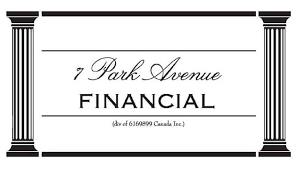|
Factoring Finance in Canada : Receivables Financing
Inside the Growing A/R Finance Market - Factoring & Alternative Business Credit Lines
YOUR COMPANY IS LOOKING FOR FACTORING IN CANADA AND RECEIVABLES FINANCING!
You've arrived at the right address! Welcome to 7 Park Avenue Financial
Financing & Cash flow are the biggest issues facing business today
ARE YOU UNAWARE OR DISSATISFIED WITH YOUR CURRENT BUSINESS FINANCING OPTIONS?
CALL NOW - DIRECT LINE - 416 319 5769 - Let's talk or arrange a meeting to discuss your needs
EMAIL - sprokop@7parkavenuefinancial.com
FACTORING RECEIVABLES - EVERYTHING YOU NEED TO KNOW ABOUT THIS METHOD OF BUSINESS FINANCING

Canadian business owners and financial managers keep hearing about factoring their accounts receivable as a viable working capital solution to generate cash flow for their firm via financing unpaid invoices.
How does factoring work in Canada, and how does your firm benefit from debt factoring financing offered by a factoring company? Also, what are the costs of factoring compared to more traditional bank loans? Let’s discuss those issues.
Canadian firms are challenged in the current environment to deliver the financial performance they need to operate and survive. Lending for small businesses and the global financial woes of 2008-2009, out of which we are now emerging didn’t do anything to help those challenges in obtaining business loans in a positive manner! And let's not even talk about the economic effects of Covid!
HIGHER FEES THAN TRADITIONAL FINANCING - BUT MORE ACCESS TO CASH!
While most business owners rely on banks to get their financing, many firms either are new, don’t qualify, or qualified previously but had financial challenges and are unable to get the financing they need for their working capital accounts, which are of course mainly receivables and inventory. A/R Financing via a commercial financing company is a subset of asset-based lending which is becoming more popular. Most factoring companies are divisions of ABL firms.
Canadian business owners want alternatives, and factored receivables provide one of many alternatives as a working capital source. If anything relying on just one source of financing, such as a bank or other outside lender has proven to be dangerous for many smaller to medium-sized firms.
ADVANTAGES OF FACTORING RECEIVABLES
Factoring is the monetization, or in simple layman’s terms, the immediate cash flowing of your outstanding invoices in your accounts receivable. Considering the timelines in supply chain financing this method of funding a business has been becoming increasingly popular.
The factoring process allows you to immediately overcome the biggest working capital challenge most businesses have, namely providing payment terms to customers, and seeing those customers even taking longer to pay than your terms!
Factoring puts you back in control of this timeless business challenge. Many of our clients use this type of financing as a bridge to get back to traditional financing because your bank sees the cash flow coming into your firm on a regular basis.
Also, providing extended payment terms that you are comfortable with to new or existing customers allows you to maintain a competitive advantage with your customs.

TYPES OF ACCOUNTS RECEIVABLE FACTORING FINANCING
Factoring is the sale of your accounts receivable to a finance factor firm. We encourage all clients to understand the different types of this financing when they need to quickly access cash –
We strongly recommend non-notification factoring to clients who qualify because it allows you to bill and collect your own receivables with no notification to your customer base - and this method comes with the same factoring costs.
It is important to note that factoring accounts receivable without recourse to your business will be more expensive as a business is transferring credit risk to the lender.
PICKING THE RIGHT ACCOUNTS RECEIVABLE FACTORING COMPANIES - UNDERSTANDING THE FACTORING ACCOUNTS RECEIVABLE FORMULA
Factoring is perceived as expensive, but a true analysis will show you that in many cases you can make money by using factoring. The financing costs associated with many factoring companies with this type of cash flow financing can be offset by collecting your receivables faster and allowing you to buy smarter and take supplier discounts. Not to mention improving relations with your suppliers.

CONCLUSION - ACCOUNTS RECEIVABLE FINANCING
Invoice Factoring in Canada is a new great alternative financing vehicle. It works because you receive immediate cash for accounts receivable, allowing you to kick start your business cycle all over again. There are a number of different types of this financing offered in Canada – speak to 7 Park Avenue Financial, a trusted, credible, and experienced advisor in this area to maximize the advantages of this cash flow financing solution
FAQ: FREQUENTLY ASKED QUESTIONS /PEOPLE ALSO ASK / MORE INFORMATION
What is accounts receivable factoring?
Invoice discounting also referred to as A/R factoring of accounts receivables is a type of short-term debt financing used by some business borrowers. The factoring transaction takes place between the company and a commercial lender, typically an accounts receivable factoring company / commercial finance company, versus a bank. Factoring companies charge a fee which is not expressed as an interest rate per se.
Many business borrowers, such as small and medium-size enterprises (SMEs), use factoring to manage working capital to avoid financial trouble It is an invoice discounting transaction where the commercial lender provides cash up front while obtaining rights to the payment of the invoice via the factoring agreement. Businesses receive an advance of typically 80-90% of the invoice value amount - when the invoice is paid by its customer the company receives the remaining balance, less a factoring fee. This method of funding frees up cash flow for the investment a company must make in carrying accounts receivable.
What are some disadvantages to consider when considering factoring as a finance and cash flow solution?
Some issues for small businesses to consider include
Factoring Fees and miscellaneous costs associated with this type of alternative financing
Lower profits which must be absorbed by good gross margins - some businesses consider merchant cash advances and short-term working capital loans which are also expensive
Slow-paying clients impact your overall cost of financing when credit terms are not respected by clients - Good accounts receivable turnover is critical to the success of any business
Businesses that use traditional notification type factoring must be aware that customers are aware you are financing via factoring - the factor typically collects the unpaid invoice
What is a factoring accounts receivable example?
If a company has one invoice or a number of outstanding invoices totalling $100,000.00 the business will receive $90,000 immediately on issuing the invoice/invoices for goods sold and delivered or services rendered. The factoring company remits the remaining $10,000 to the company, less financing costs - aka factoring fees - when the client pays the invoice.

' Canadian Business Financing With The Intelligent Use Of Experience '
STAN PROKOP
7 Park Avenue Financial/Copyright/2024

Stan Prokop is the founder of 7 Park Avenue Financial and a recognized expert on Canadian Business Financing. Since 2004 Stan has helped hundreds of small, medium and large organizations achieve the financing they need to survive and grow. He has decades of credit and lending experience working for firms such as Hewlett Packard / Cable & Wireless / Ashland Oil
|